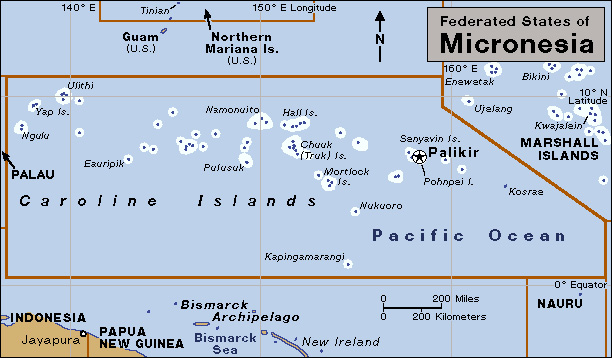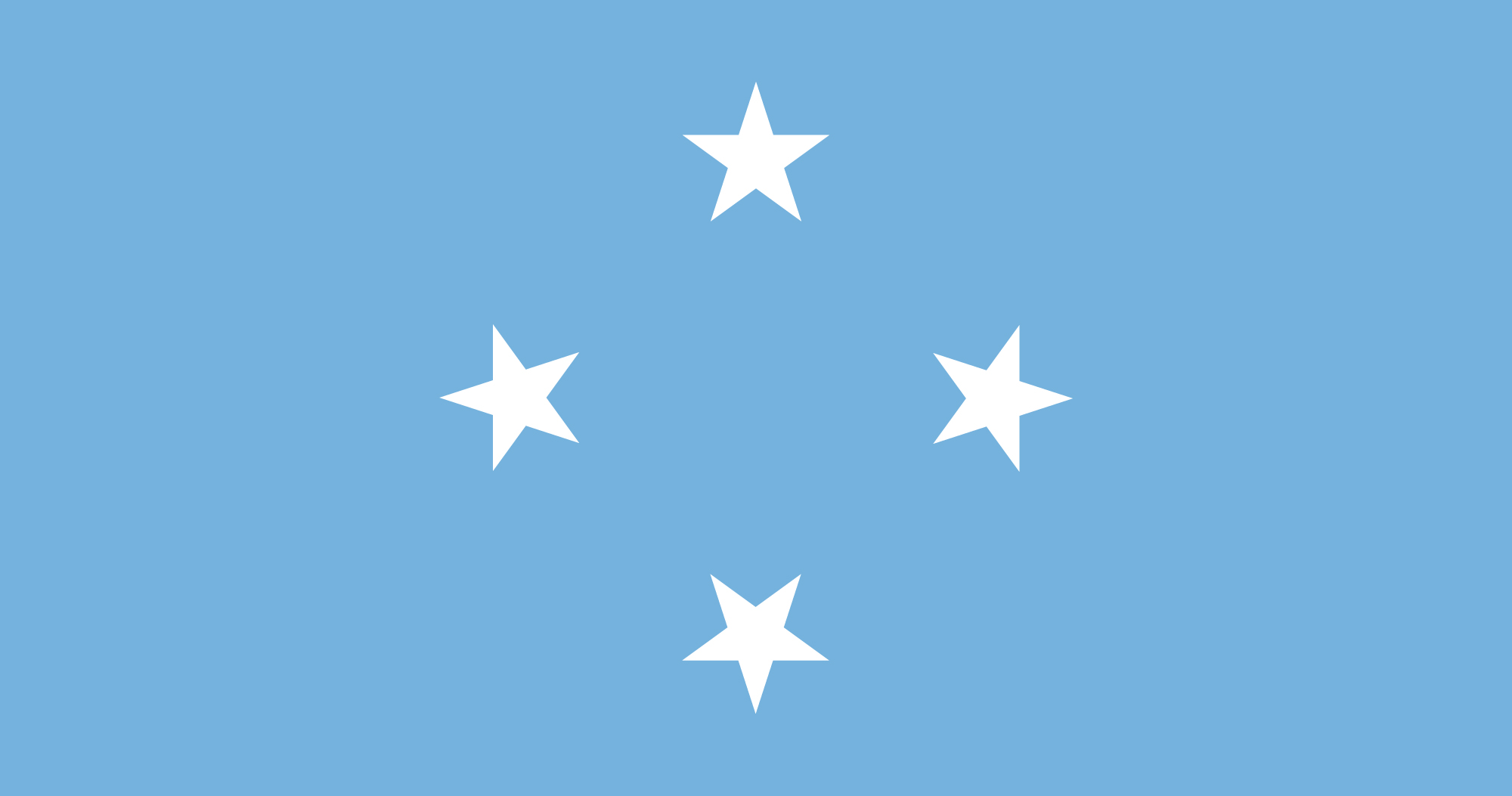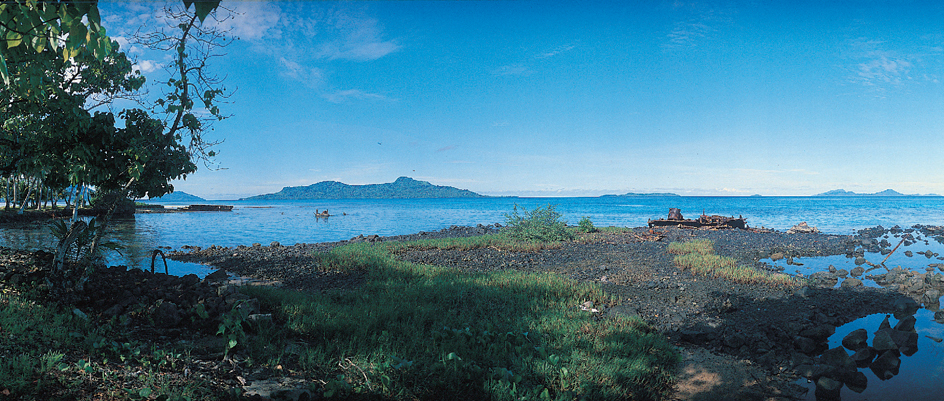Micronesia, Federated States of, is a country in the North Pacific Ocean. The Federated States of Micronesia (FSM) consists of 607 islands just north of the equator in the Caroline Island group. The total land area is only 271 square miles (702 square kilometers). But the islands are scattered across about 1 million square miles (2.5 million square kilometers) of ocean. The United States gained control of the islands in 1945. Although the FSM is now an independent country, the United States is responsible for its defense.

Palikir, on the island of Pohnpei, is the nation’s capital. The largest city is Weno in the state of Chuuk (formerly called Truk). The U.S. dollar serves as the basic unit of currency. The national anthem is “Patriots of Micronesia.”
Government
of the FSM is headed by a president. A 14-member Congress makes the laws. The people elect the Congress members, and the Congress selects the president. The FSM has four states. The states, named for the chief islands, are Chuuk, Kosrae, Pohnpei, and Yap. Each state elects its own governor and state congress. Village chiefs and traditional leaders play important roles in state governments.

People.
About 100 of the 607 islands in the FSM are inhabited. Most of the people are Carolinians, also known as Micronesians, but some have Polynesian ancestry (see Pacific Islands (People)). The official language is English, but local languages are commonly used. Almost all the people are Christians, but local religious beliefs are strong in some areas.
About 77 percent of the people live in rural areas, and 23 percent live in urban areas. Traditional ways of life are changing rapidly as many Carolinians adopt U.S. customs. Many people, especially those in urban areas, depend on food, clothes, and other goods imported from the United States and other countries. Many houses in these areas are made of imported lumber, plywood, or concrete with metal roofing. A more traditional way of life continues in some areas. In these places, relatives live in large family groups and work together to supply food, shelter, and other necessities. They depend largely on fish and on native plants—such as coconuts, breadfruit, and yams—for food. Families build houses with thatched roofs and walls made from palm branches and local wood.
Land and climate.
The FSM has two types of islands: (1) mountainous, volcanic islands and (2) ring-shaped coral islands or groups of islands called atolls. The soil on the volcanic islands is fertile. Mangrove swamps line the shores, and dense rain forests cover the valleys. The soil supports many crops. In contrast, the atolls generally have infertile soil and relatively little vegetation.

The climate is tropical with an average temperature of about 80 °F (27 °C). Average annual rainfall ranges from about 120 inches (302 centimeters) on Yap to over 300 inches (760 centimeters) on the mountains of Pohnpei. Typhoons are common, especially on the western islands.
Economy.
The government is the largest employer in the FSM. Many people in the FSM make a living by fishing and farming. Bananas, breadfruit, cassava, and coconuts are important crops. The FSM has little manufacturing and mining.
History.
The first people to settle in present-day FSM probably came from Southeast Asia over 3,000 years ago. Spanish explorers of the 1500’s became the first Europeans to arrive. Spain formally claimed the Caroline Islands in 1885 and sold them to Germany in 1899.
Japan gained control of the islands in World War I (1914-1918). The United States took them in 1945, at the end of World War II. In 1947, the United States began administering the islands as part of the United Nations Trust Territory of the Pacific Islands. In 1986, the United States granted independence to the FSM. Under a Compact of Free Association, the United States must provide the FSM with defense and economic assistance.
See also Palikir.
